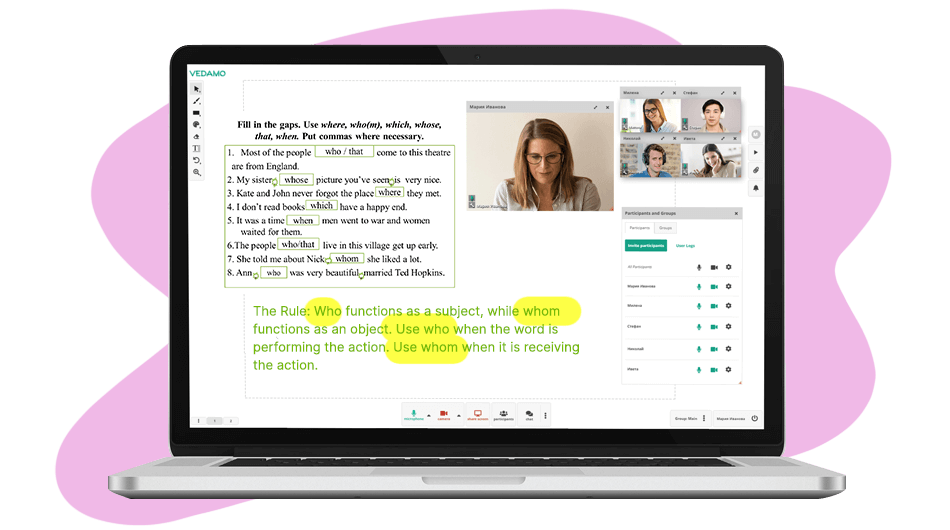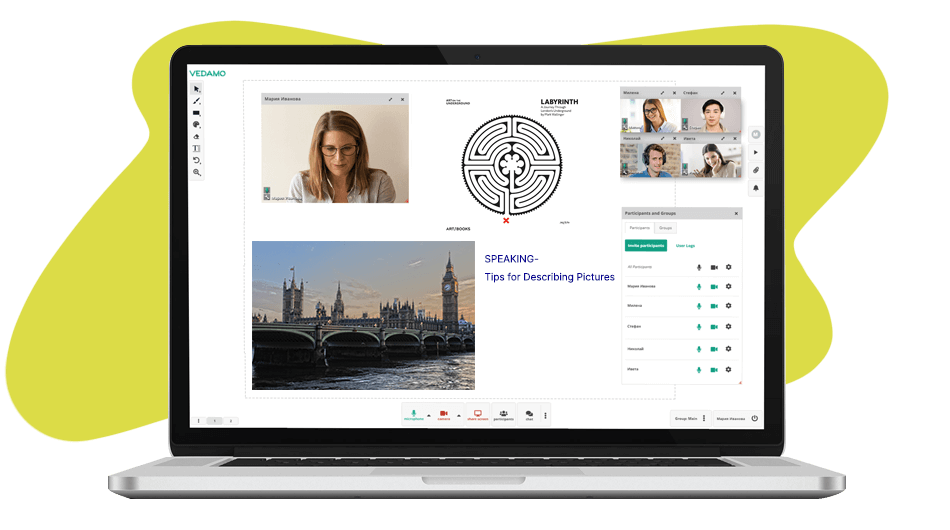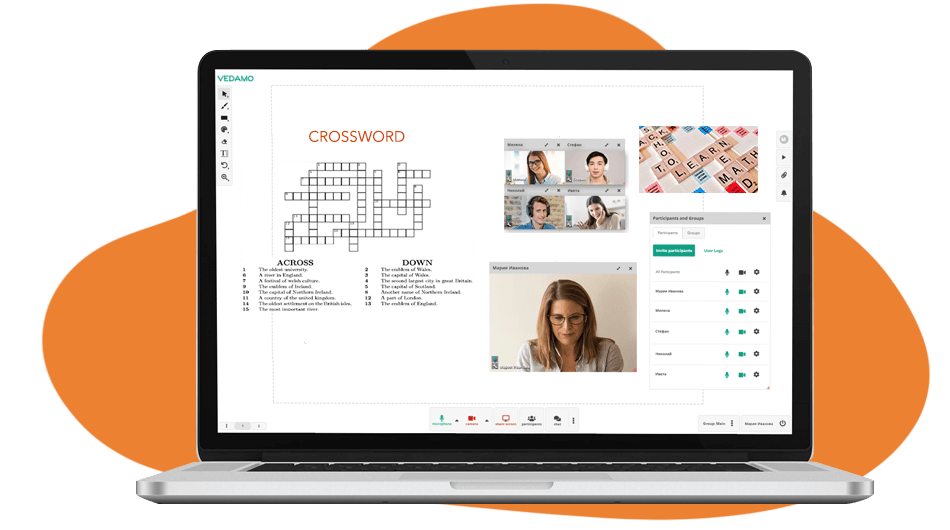Group activities in the virtual classroom are among the most engaging, fun, rewarding and bonding experiences that teachers can implement in the lessons on many occasions. Working in groups provides tons of benefits for developing students’ social skills, knowledge, critical thinking, decision making capabilities and so much more. They are an important part of the class management strategies that help to improve students’ focus, motivation and engagement during the learning sessions. There are so many variations of the group activities that can be adjusted to many different situations and occasions in the virtual classroom. For example, teachers can divide the class into big teams for exercises and challenges that require more time and commitment or use the small-groups approach for quick brainstorming sessions, bonding strategies, and games etc. that don’t take a lot of time but have a great positive effect in boosting students’ motivation and mood.
What strategies work best for conducting successful small-group activities in the virtual classroom? How big should the teams be? What approach should you apply when dividing the groups? The answers will vary depending on factors such as, learning goals, students’ interests and behavior, skills and motivations etc.
Forming small groups in the virtual classroom
Small groups are considered to be teams of 2 to 4 students. One of the best benefits of the small-groups technique is that it is very versatile. Teachers can easily implement it a few times per week for both learning and fun activities. Working in small groups is a very successful class management tool for handling discipline challenges, improving students’ engagement and focus, bonding experiences etc. The best feature in the virtual classroom for group activitiesare the breakout rooms. Teachers can easily allocate the teams in the dedicated breakout rooms and give out assignments. They can also prepare the breakout rooms in advance with exercises on the online whiteboard, Google docs lists etc.

What strategies to use when forming small-groups? Use different approaches every time to make the most of this technique. For example, form small teams based on students’ skill level for one of the lessons. You can divide the groups based on social skills and interests on another occasion. Try to pair shyer students with more outgoing learners for fun group activities and many more. You can also try to form teams with students with similar levels of knowledge and interests. Make sure to keep changing the teams for different assignments. This is one of the best ways to add fresh and exciting activities in class and challenge students to work on their social skills, improve their teamwork skills and critical thinking capabilities. It’s also a lot of fun.
Diversify the activities
Working in small-groups with changing participants for each activity opens up lots of opportunities for trying different exercises, assignments and approaches. Mix fun activities and learning-focused projects. Use the technique for working in small teams in the virtual classroom to play games when switching between topics, for quick brainstorming sessions, short quizzes and much more. Give assignments for discussions on different topics that each small team can work on in the dedicated breakout room.

- Ice breaker games – teams can play simple fun games for bonding experiences, such as “Two Truths and a Lie”, “Time Machine”, “Three Words” and many more. The online whiteboard in each breakout room becomes the focal point of the activity where the small group shares their ideas and answers.
- Storytelling – give a topic to each small group and encourage every student to take turns to add to the story. Participants can use the online whiteboard and the text features in the breakout rooms to add notes. Google Word documents are also very helpful for making notes and keeping track of the activity in the breakout room.
Practical tips for conducting small-group activities
- Give clear instructions – make sure that the assignment you prepare for the team has very clear instructions about participants’ tasks, roles and goals. Use forms such as Google docs to prepare in advance your instructions and add them to the breakout rooms where they will be available at any time for the participants.
- Appoint the roles in the team – even small teams need good organization to be more efficient. Depending on the assignment, the group might need a Note catcher – for brainstorming sessions and storytelling, a Mediator for discussions and debates, a Timekeeper – a student who makes sure that the assignment will be complete on time, etc.
- Encourage feedback – one of the best benefits from small-group activities is the possibility to get immediate feedback about students’ interests, knowledge, progress, opinions etc. Participants can share their feedback in a shared document in the breakout room or send individual notes to the teacher.

Adjust your expectations
Working in groups is all about collaboration, commitment and engagement. When working in small-groups with changing participants, it might take time for accomplishing the productive flow that well-established teams have. Keep realistic expectations about the results you will be getting from the small-group activities and always incorporate new ideas, try new combinations of participants and experiment with topics, exercises and length of the activity. One thing to remember is that even if the group activity does not deliver the results you were hoping for, it still offers feedback on students’ progress, interests and dynamics that you can use to improve the learning experience in the virtual classroom.
Small-group activities create some of the most memorable and fun experiences in the classroom. When students are encouraged to work together in small groups, they need to master collaboration skills, learn how to be tolerant and respectful, enrich their decision-making skills and build relationships. Small-group activities are awesome for short sessions for transferring sections between topics. They are also a good option for long-term projects, like working on research, creating presentations and much more.
